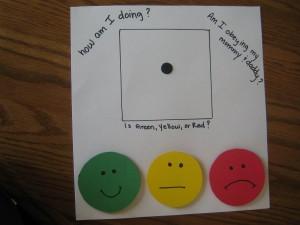Â
1. Using a piece of poster board, create a “Things We are Thankful For” chart. Each night, over dinner or before bed (or whatever time works for you), recap your day/week and discuss things you are thankful for.
Â
2. Take your child to serve at a homeless shelter/mission. Before, during, and after, talk with your little ones about why it’s important to help others. Seeing what others are going through reminds us how blessed we are to have even a little. This both promotes compassion and gratitude.
Â
3. Lead by example. Tell your children why you are thankful for them. Tell them all the time. Your children will never get tired of hearing how thankful you are for them.
Â
4. Refresher Course in Manners. This may seem obvious, but remind your child to say their “Please and Thank You’s” Teaching them at a very early age provides a foundation that can later be built upon when the “Why” stage hits.
Â
5. Make a Thanks and Giving Tree. (As seen at Chocolate On My Cranium). This is another great “Things I Am Thankful For” tool.
Â
6. Help your child to write thank you notes to their school teachers, friends, relatives and coaches and other important people in their lives. This not only encourages thankfulness, it also teaches them to share it with others. “Just Because” cards are wonderful too!
Â
7. Make the most of teachable moments. When I worked at Gymboree Play and Music as a play teacher, we often talked about paying attention to those “teachable moments” or the moments with your children when there might be a lessoned to be learned. So, for instance, when you are with your little one and a stranger opens the door for you at a store, say “That was very kind of the man to open the door for us.” If there’s time, encourage them to say thank you.
Â
8. Pray. (I understand that if you do not believe in God or even a “higher power” this may not apply to you. As for me, and my household, we serve the Lord and this suggestion is based on that premise).Take a minute to explain to your child that God is the ultimate Giver and we are grateful to Him for the gift of His Son and all the blessings we receive, and that it is because of Him that we are able to give to others.
Â
9. Donate items to a charitable organization or a needy family (or person). Have your child choose the items him(her)self and be present when giving. This is another way to remind them to be grateful what they already own and instead of perhaps buying something, they can give out of what they have. This is also a good lesson in sacrifice.
Â
10. Write it out, Keep a Journal. Keep a “Things I am Thankful For” or “Attitude of Gratitude” Journal. This way your child can look back and be reminded of past blessings as well as present. (Incidentally, this helped me a few years ago when I was battling depression.)







